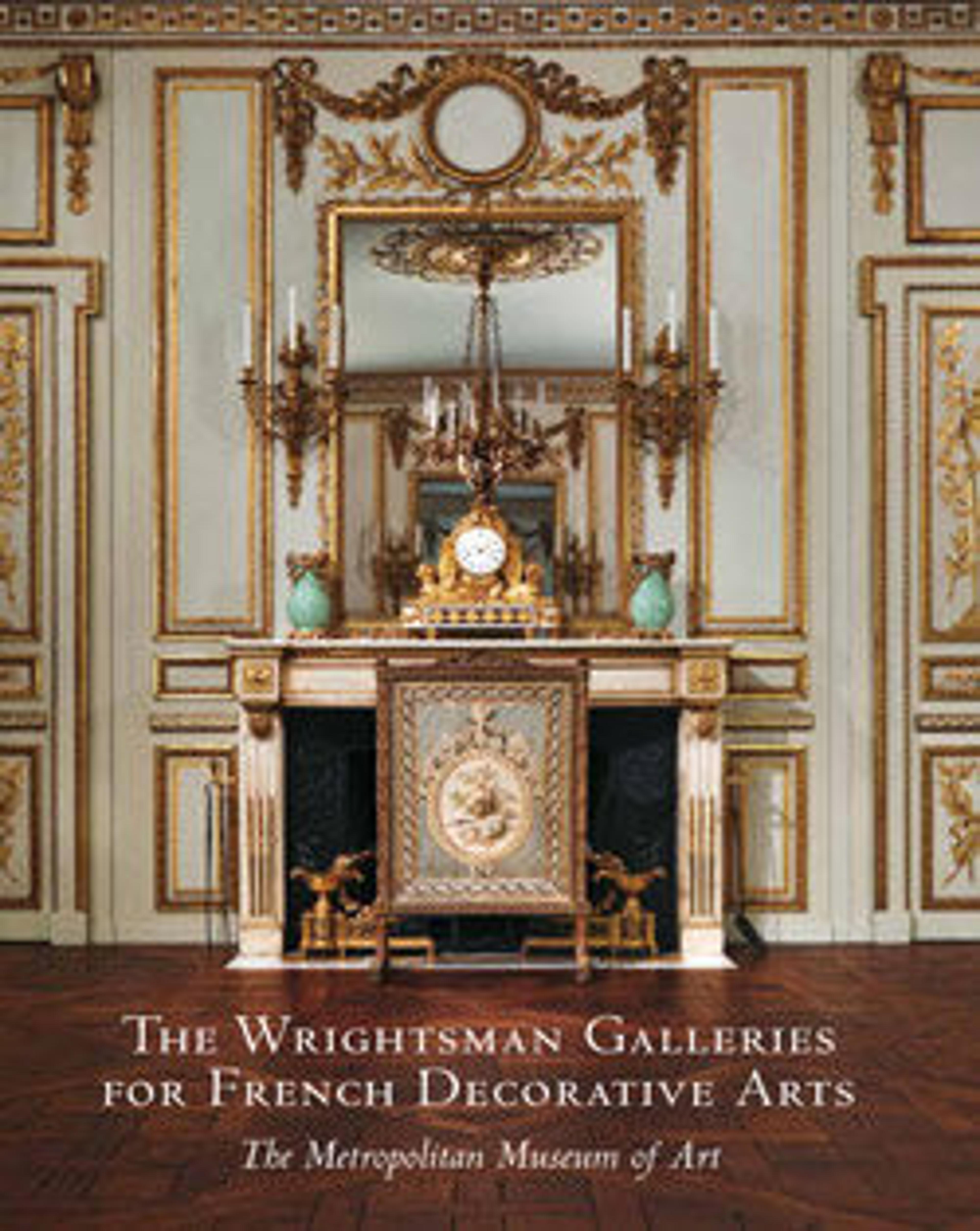Stand (piètement) for a model of La Samaritaine
The hydraulic pump constructed on one of the piers of the Pont-Neuf was among the mechanical miracles of early seventeenth-century Paris. It supplied water from the river Seine to the fountains of the Louvre and Tuileries palaces. Between 1712 and 1719 the pump house was rebuilt by the well-known architect Robert de Cotte (1656–1735). Fitted with a carillon on its steep roof, the facade was adorned with a large clock and a sculptural group in lead representing Jesus and the Samarian woman at Jacob’s Well. This group gave the new building its name: La Samaritaine.
In 1772 Charles-Philippe, comte d’Artois (1757–1836), ordered two maquettes of La Samaritaine, each with a removable roof, a clock on one side, a barometer on the other, and various luxury objects inside, such as a gold cadinet or casket to contain a set of cutlery and spices. Some thirty artists collaborated on this extraordinary commission, including the sculptor Louis-Simon Boizot (1743–1809), the clockmaker Robert Robin (1741–1799), and the bronze workers André Ravrio and Luc-Philippe Thomire, under the supervision of Pasquier, the mécanicien (engineer) to the comte d’Artois. One of these models was presented by the count to his sister-in-law, Marie-Antoinette, with whom he shared a close friendship. The other was for his bride-to-be, Marie-Thérèse of Savoy.
The Museum’s stand, which has the crowned initials MT of the comtesse d’Artois, was executed by the little-known sculptor Jean-Baptiste Vinceneux for the model of La Samaritaine that belonged to her. Richly carved with oak, laurel, and myrtle branches, as well as with garlands of flowers, the stand displays a coat of arms on the back that has not yet been positively identified. A three-dimensional composition consisting of a classical urn, billing doves, a flaming torch, and a quiver of arrows adorns the cross-stretcher that connects the four slender legs. Symbolizing love and marital felicity, this group undoubtedly refers to the nuptials of the comte and comtesse d’Artois, which took place in November 1773, the same year the support was made; the marriage, however, proved an unhappy one as the young husband continued to lead a licentious life. Pierced guilloche moldings running along the sides of the stand allude to the fact that the models of La Samaritaine were intended to exude perfume. Placed on a later stand, one of the maquettes is in the collection of the Musée Carnavalet, Paris.
In 1772 Charles-Philippe, comte d’Artois (1757–1836), ordered two maquettes of La Samaritaine, each with a removable roof, a clock on one side, a barometer on the other, and various luxury objects inside, such as a gold cadinet or casket to contain a set of cutlery and spices. Some thirty artists collaborated on this extraordinary commission, including the sculptor Louis-Simon Boizot (1743–1809), the clockmaker Robert Robin (1741–1799), and the bronze workers André Ravrio and Luc-Philippe Thomire, under the supervision of Pasquier, the mécanicien (engineer) to the comte d’Artois. One of these models was presented by the count to his sister-in-law, Marie-Antoinette, with whom he shared a close friendship. The other was for his bride-to-be, Marie-Thérèse of Savoy.
The Museum’s stand, which has the crowned initials MT of the comtesse d’Artois, was executed by the little-known sculptor Jean-Baptiste Vinceneux for the model of La Samaritaine that belonged to her. Richly carved with oak, laurel, and myrtle branches, as well as with garlands of flowers, the stand displays a coat of arms on the back that has not yet been positively identified. A three-dimensional composition consisting of a classical urn, billing doves, a flaming torch, and a quiver of arrows adorns the cross-stretcher that connects the four slender legs. Symbolizing love and marital felicity, this group undoubtedly refers to the nuptials of the comte and comtesse d’Artois, which took place in November 1773, the same year the support was made; the marriage, however, proved an unhappy one as the young husband continued to lead a licentious life. Pierced guilloche moldings running along the sides of the stand allude to the fact that the models of La Samaritaine were intended to exude perfume. Placed on a later stand, one of the maquettes is in the collection of the Musée Carnavalet, Paris.
Artwork Details
- Title:Stand (piètement) for a model of La Samaritaine
- Maker:Jean-Baptiste Vinceneux (ca. 1726–ca. 1795, active 1750–86)
- Date:1773
- Culture:French, Paris
- Medium:Carved, painted, gilded and silvered walnut; modern wood top
- Dimensions:Overall: 38 1/8 × 28 1/4 × 22 5/8 in. (96.8 × 71.8 × 57.5 cm)
- Classification:Woodwork-Furniture
- Credit Line:Gift of Mr. and Mrs. Charles Wrightsman, 1983
- Object Number:1983.185.7
- Curatorial Department: European Sculpture and Decorative Arts
More Artwork
Research Resources
The Met provides unparalleled resources for research and welcomes an international community of students and scholars. The Met's Open Access API is where creators and researchers can connect to the The Met collection. Open Access data and public domain images are available for unrestricted commercial and noncommercial use without permission or fee.
To request images under copyright and other restrictions, please use this Image Request form.
Feedback
We continue to research and examine historical and cultural context for objects in The Met collection. If you have comments or questions about this object record, please contact us using the form below. The Museum looks forward to receiving your comments.
